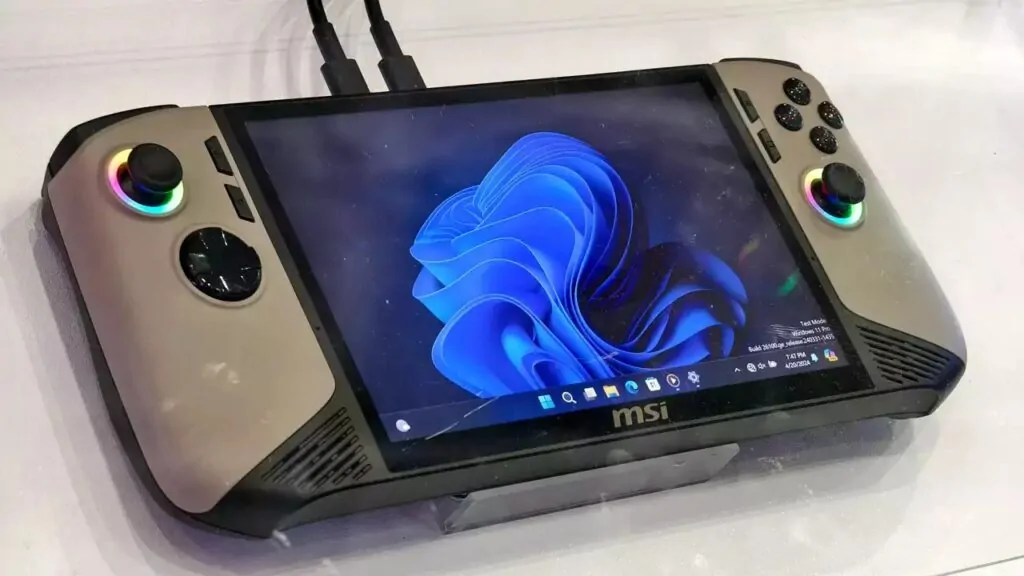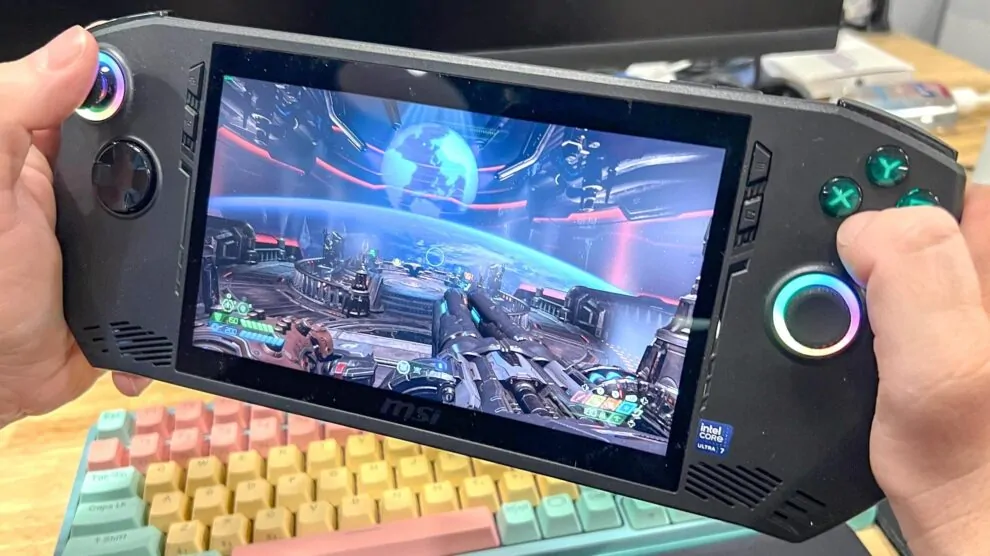The MSI Claw represents a significant entry into the growing handheld gaming PC market. As more manufacturers join this space, consumers are presented with increasingly diverse options. Let’s dive deep into what the MSI Claw offers and how it stacks up against the competition.

Performance: A Cut Above?
Intel-Powered Prowess
The Claw’s use of an Intel chip sets it apart in a market dominated by AMD processors. This choice potentially offers:
- Superior raw performance in certain scenarios
- Potentially better compatibility with Windows games and applications
- A unique selling point in a crowded market
Overboost Mode
This feature could be a game-changer for demanding titles:
- Possibility of running high-end games at higher settings
- Potential for smoother gameplay experiences
- A feature that might appeal to enthusiasts who want to push their hardware
Future-Proofing with Lunar Lake
The rumored version with Intel’s upcoming Lunar Lake chips is intriguing:
- Could offer significant performance improvements
- Might make the Claw more competitive in the long term
- Potential for better power efficiency, addressing battery life concerns
Design and Controls: Form Meets Function?
Hall Effect Sensors
The use of Hall Effect sensors in the joysticks is a notable feature:
- Potentially longer lifespan compared to traditional joysticks
- May offer more precise control in games
- Could reduce the likelihood of stick drift over time
Control Feel
The reported “thin and cheap-feeling” controls are a concern:
- Comfort is crucial for extended gaming sessions
- Perceived quality can impact overall user satisfaction
- May be a deciding factor for some potential buyers
Battery Life: The Achilles’ Heel?
Lack of Specific Benchmarks
The absence of clear battery life information is problematic:
- Battery life is a crucial factor for portable gaming devices
- Could be a sign that the Claw’s performance comes at the cost of power efficiency
- Makes it difficult for consumers to make informed comparisons with competitors
Intel vs. AMD Efficiency
Historically, AMD has had an edge in power efficiency:
- The Claw may struggle to match the battery life of AMD-powered competitors
- Could limit the device’s appeal for on-the-go gaming
- Might necessitate frequent charging or external power banks for longer sessions
Software Ecosystem: A Double-Edged Sword
The Intel chip likely ensures broad compatibility with Windows games:
- Access to a vast library of PC games
- Potentially better performance in Windows-specific tasks
- Familiarity for users coming from traditional Windows PCs
Lack of FSR Support
The absence of AMD’s FidelityFX Super Resolution (FSR) technology is significant:
- FSR can greatly improve performance in supported games
- May result in lower frame rates or visual quality in some titles compared to AMD-powered handhelds
- Could be a dealbreaker for users who prioritize this technology
Price Point: Premium Performance, Premium Cost
$800 Price Tag
The Claw’s high price positions it as a premium device:
- May limit its appeal to a more niche, enthusiast audience
- Requires justification through superior performance or features
- Places it in direct competition with high-end handhelds and even some gaming laptops
Value Proposition
Consumers will need to weigh the Claw’s benefits against its cost:
- Is the potential performance boost worth the price premium?
- How does it compare to similarly priced gaming options (handhelds, laptops, consoles)?
- Will the future-proofing aspect justify the investment?
Market Positioning: Finding Its Niche
Target Audience
The MSI Claw seems geared towards:
- Enthusiast gamers who prioritize performance
- Users who value the flexibility of a Windows-based handheld
- Early adopters willing to pay a premium for cutting-edge technology
Competition
The Claw enters a market with established players:
- Steam Deck: Known for its value and vast game compatibility
- ASUS ROG Ally: Offers strong performance with AMD hardware
- Various Windows-based handhelds from smaller manufacturers
Conclusion: A Powerful Option with Caveats
The MSI Claw presents an intriguing option in the handheld gaming PC market. Its Intel-powered performance and Overboost mode suggest a device capable of handling demanding games with ease. The potential for future models with even more advanced chips hints at long-term viability.
However, the high price point, concerns about control feel, and potential battery life limitations may give some consumers pause. The lack of AMD-specific features like FSR also means that the Claw might not be the best choice for every type of game or user.
Ultimately, the MSI Claw’s success will likely depend on how well it can deliver on its performance promises and whether its unique features justify its premium positioning. For gamers who prioritize raw power and are willing to invest in a high-end device, the Claw could be a compelling choice. However, those more concerned with value or battery life might find better options elsewhere in the market.
As the handheld gaming PC market continues to evolve, devices like the MSI Claw push the boundaries of what’s possible in portable gaming. Whether it becomes a market leader or remains a niche product, its introduction is sure to drive innovation and competition in this exciting sector of the gaming industry.










Add Comment